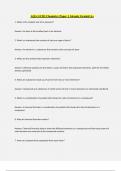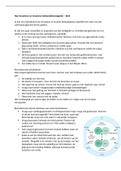Tentamen (uitwerkingen)
AQA GCSE Chemistry Paper 1 Already Graded A+
- Vak
- Instelling
AQA GCSE Chemistry Paper 1 Already Graded A+ 1. What is the smallest unit of an element? Answer: An atom is the smallest part of an element. 2. What is a substance that consists of only one type of atom? Answer: An element is a substance that contains only one type of atom. 3. What are th...
[Meer zien]




